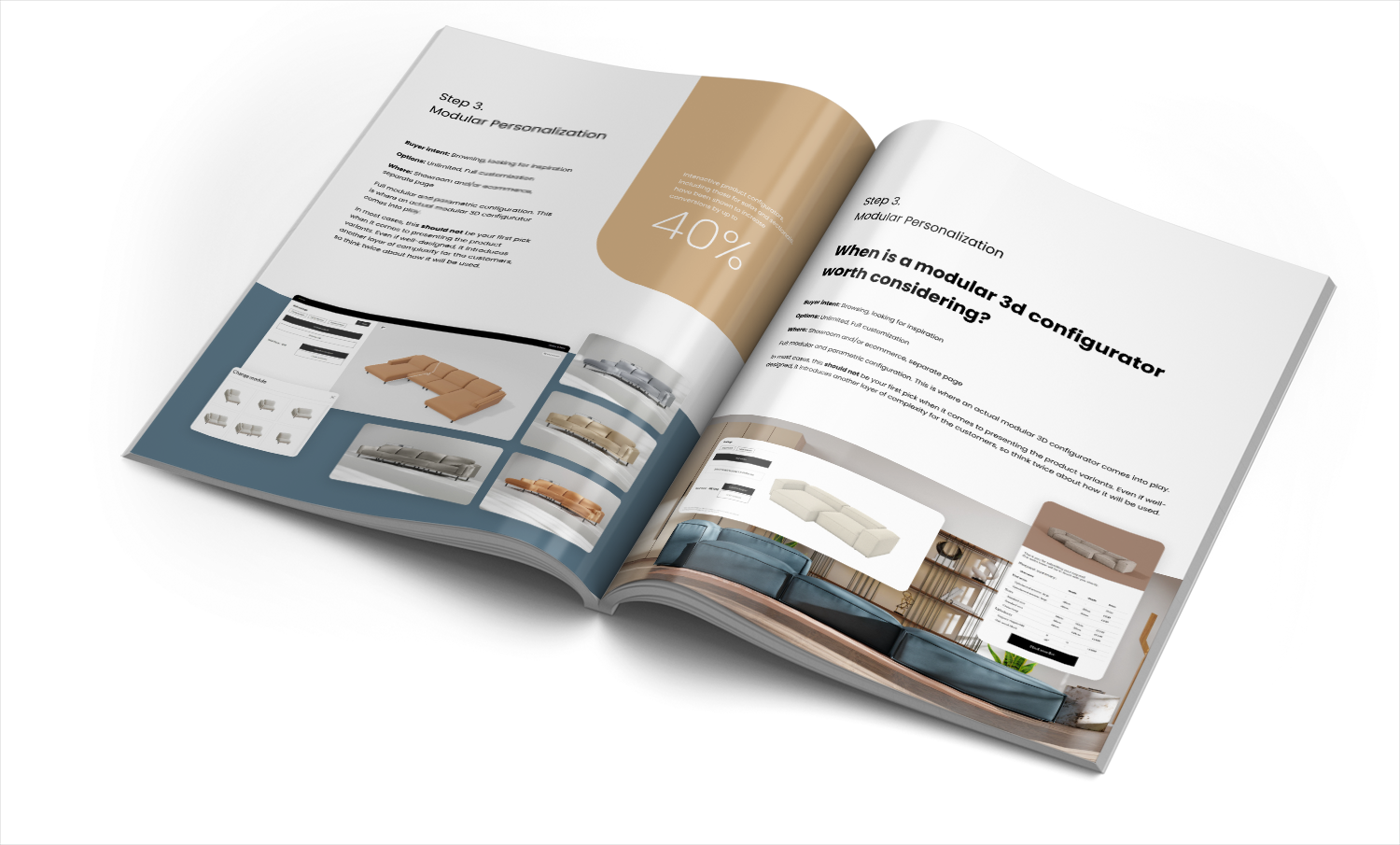The Ultimate 2025 Sofa Configuration Guide
Get your free copy todayy!

A Comprehensive Breakdown of Pricing Factors, Tiers, and the Impact of Automation
In 2025, with mass customization being an established trend, furniture companies expect tools that deliver quick and easy personalization processes for the customers. Buyers demand immersive, personalized product experiences - ideally powered by 3D visualization and augmented reality (AR). For businesses across industries such as furniture, fashion, industrial manufacturing, and electronics, a product configurator is no longer optional; it’s a critical tool for driving sales and reducing returns.
One of the most common questions we receive at AR‑Range is:
How much does a product configurator cost?
This article provides a clear breakdown of the factors influencing configurator pricing, typical cost ranges, and how automation is reshaping the landscape.
Configurator development costs correlate strongly with the complexity of your product. Factors include:
The level of visualization sophistication affects pricing significantly:
Basic interfaces with simple dropdowns or color pickers are less costly. Advanced features such as:
Integrating your configurator with e-commerce platforms (Shopify, Magento), ERP, CRM, or analytics systems enhances functionality but adds development effort and cost.
Managing a small product range versus thousands of configurations requires different technical approaches. Automation tools can reduce manual content creation costs for large variant sets.
Ensuring fast load times and seamless performance across devices, including mobile, may require cloud hosting solutions, adding to ongoing expenses.
A scalable configurator that supports easy updates and new product launches reduces long-term costs compared to rebuilding from scratch.
For most medium-sized businesses, the Professional tier balances cost and capabilities, delivering strong ROI.
Automation platforms such as AR‑Range transform configurator development by:
These efficiencies reduce manual labor and accelerate time-to-market.
When budgeting for a configurator, watch out for:
Partnering with AR‑Range ensures performance-optimized delivery, expert support, and scalable automation.
Absolutely. The benefits extend beyond direct sales increases to:
The cost of a product configurator depends largely on factors like product complexity, feature set, visualization type, and integrations. Here’s a quick overview:
Leveraging automation platforms like AR‑Range can dramatically reduce development time and costs by automating 3D content creation and delivering scalable AR experiences. This makes sophisticated configurators more accessible and cost-effective than ever.
Investing in a well-designed product configurator not only enhances customer experience but also accelerates sales, reduces returns, and delivers strong ROI.